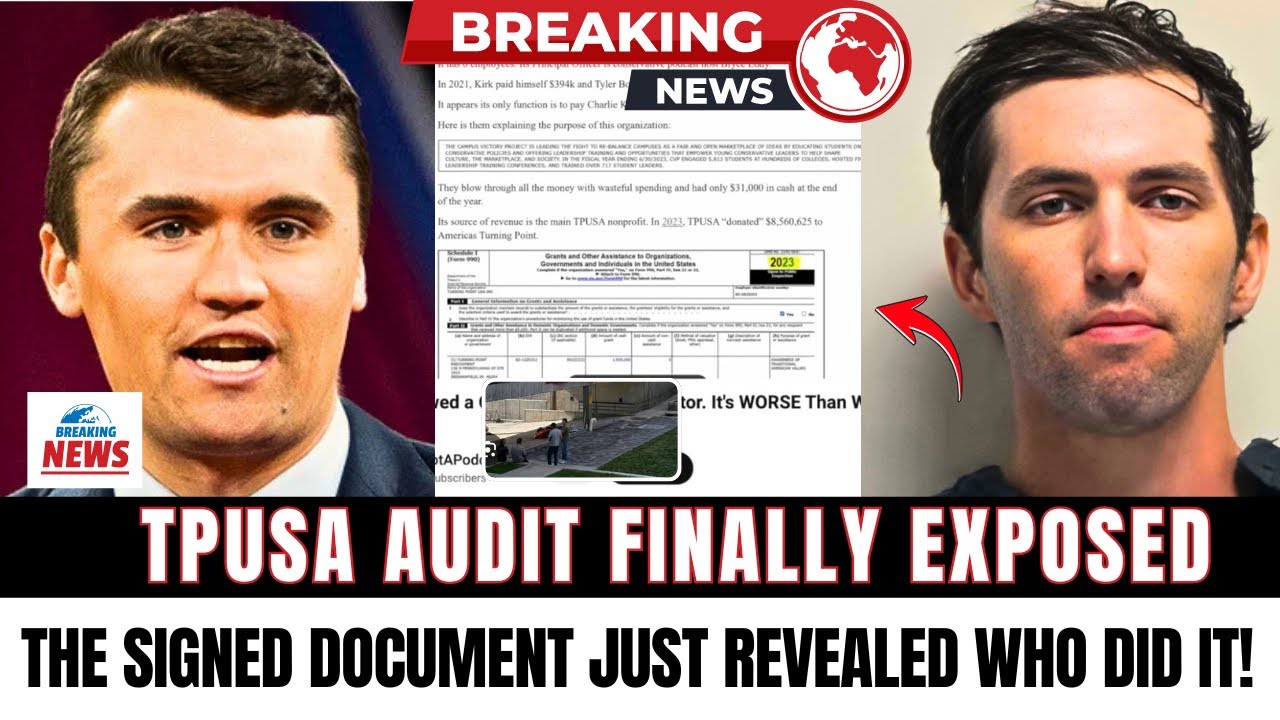
For months, the Charlie Kirk case has been surrounded by confusion, unanswered questions, and a growing sense that key information has been deliberately kept in the shadows. But this week, a new development shattered that silence. A previously unseen internal record—one that had never been mentioned publicly—has thrust TPUSA auditor Tyler Robinson into the spotlight for the first time.
The revelation didn’t come from a press briefing, a leak from law enforcement, or a public statement. It surfaced in the most unexpected way: through an overlooked piece of documentation that someone inside TPUSA allegedly tried to keep off the books.
Until now, Tyler Robinson’s name had barely been mentioned outside private conversations and scattered whispers among insiders. He was known internally as a quiet, detail-oriented auditor whose job was to verify financial trails, compliance procedures, and internal reporting. In other words, the type of person who sees everything—but never speaks publicly.
But according to sources familiar with the newly uncovered information, Tyler’s role may have extended far beyond routine auditing. The document, described as a confidential internal memo, reportedly outlines discrepancies tied to the days leading up to Charlie Kirk’s death. It suggests that Tyler Robinson had flagged irregularities—irregularities that were never escalated, never disclosed, and never added to the official investigative timeline.
And that’s where the questions begin.
What exactly did Tyler discover?
Why were his findings never included in the public-facing reports?
And who decided those findings needed to be buried?
The document itself does not assign blame. It doesn’t accuse Tyler of wrongdoing, nor does it point directly at any individual. But it does imply that someone—either intentionally or strategically—kept his audit notes out of circulation.
Inside TPUSA, this has created a panic that few expected. Staff members are reportedly divided: some believe Tyler was following protocol and simply reported what he found, while others think he was pressured to stay silent.
But perhaps the most shocking part is the timing.
Sources say Tyler’s notes were made before the first wave of public suspicion, before the leaked footage, before the investigation began shifting toward internal conflicts. In other words, Tyler may have been the first person inside the organization to detect that something wasn’t adding up.
If this is true, it suggests a completely new sequence of events—one that contradicts the narrative TPUSA leadership has presented for weeks.
What makes Tyler’s situation even more complicated is his recent disappearance from public view. He has not spoken publicly, has not responded to inquiries, and has reportedly taken a leave of absence. Some insiders claim he’s under pressure. Others insist he’s simply overwhelmed and trying to avoid becoming a public figure in a chaotic national story.
Meanwhile, the information that sparked all of this continues to spread rapidly online. Analysts are breaking down every phrase in the memo. Commentators are speculating about who had access to Tyler’s notes. And viewers are drawing connections between the auditor’s missing report and other inconsistencies that have surfaced over the last month.
There is growing belief that Tyler Robinson may hold answers no one else has—and that someone inside TPUSA knew this and kept his findings from reaching investigators.
The bigger picture remains blurry. But this latest exposure raises a question that can no longer be ignored:
If an auditor’s internal warning was hidden, what else has been kept out of sight?
The pressure is now stronger than ever. Public demands for transparency are intensifying. Insider sources say more documents may exist. And Tyler himself may eventually become the key figure in understanding what truly led to the chaotic collapse of trust inside TPUSA.
For now, one thing is certain: the unseen secret that has just emerged has shifted the entire trajectory of the Charlie Kirk case—and people are watching closely to see what surfaces next.

